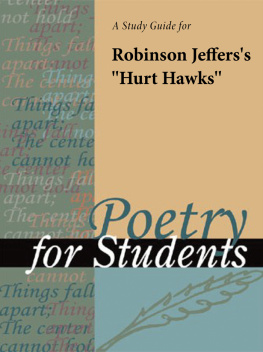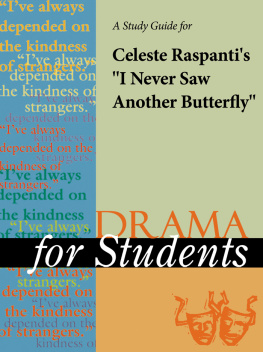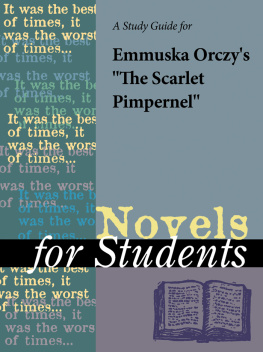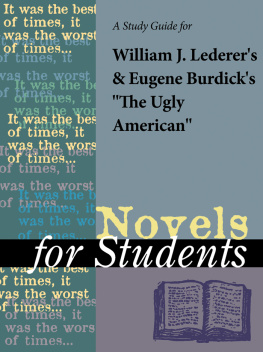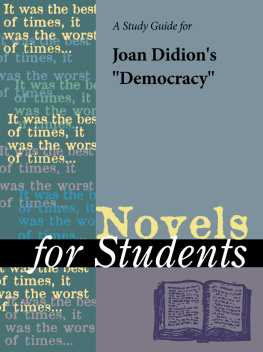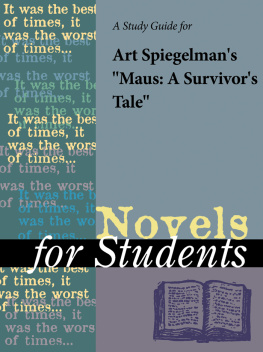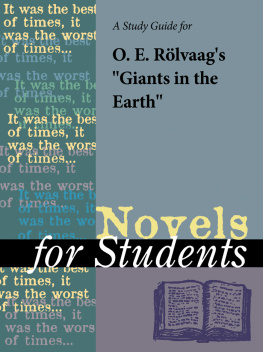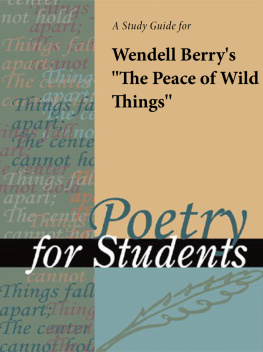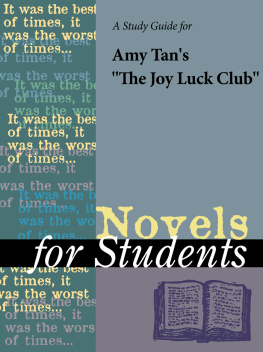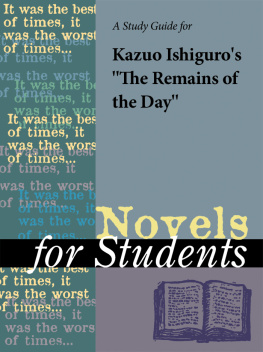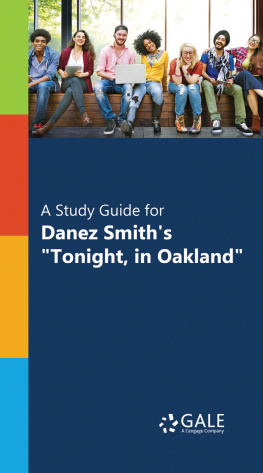TABLE OF CONTENTS
Guide
Poetry for Students, Volume 3
Staff
Series Editors: Marie Rose Napierkowski and Mary Ruby.
Contributing Editors: Amy Francis, Carol Gaffke, David Galens, Lynn Koch, Marie Lazzari, Mary Onorato, James Person, Jr., Susan Salas, Anna J. Sheets, Diane Telgen, Lawrence J. Trudeau.
Managing Editor: Drew Kalasky.
Research: Victoria B. Cariappa, Research Team Manager. Andy Malonis, Research Specialist. Julia C. Daniel, Tamara C. Nott, Tracie A. Richardson, and Cheryl L. Warnock, Research Associates. Jeffrey Daniels, Research Assistant.
Permissions: Susan M. Trosky, Permissions Manager. Kimberly F. Smilay, Permissions Specialist. Steve Cusack, Permissions Assistant.
Production: Mary Beth Trimper, Production Director. Evi Seoud, Assistant Production Manager. Shanna Heilveil, Production Assistant.
Graphic Services: Randy Bassett, Image Database Supervisor. Robert Duncan and Michael Logusz, Imaging Specialists. Pamela A. Reed, Photography Coordinator. Gary Leach, Macintosh Artist.
Product Design: Cynthia Baldwin, Product Design Manager. Cover Design: Michelle DiMercurio, Art Director.
Page Design: Pamela A. E. Galbreath, Senior Art Director.
Copyright Notice
Since this page cannot legibly accommodate all copyright notices, the acknowledgments constitute an extension of the copyright notice.
While every effort has been made to secure permission to reprint material and to ensure the reliability of the information presented in this publication. Gale Research neither guarantees the accuracy of the data contained herein nor assumes any responsibility for errors, omissions, or discrepancies. Gale accepts no payment for listing; and inclusion in the publication of any organization, agency, institution, publication, service, or individual does not imply endorsement of the editors or publisher. Errors brought to the attention of the publisher and verified to the satisfaction of the publisher will be corrected in future editions.
This publication is a creative work fully protected by all applicable copyright laws, as well as by misappropriation, trade secret, unfair competition, and other applicable laws. The authors and editors of this work have added value to the underlying factual material herein through one or more of the following: unique and original selection, coordination, expression, arrangement, and classification of the information. All rights to this publication will be vigorously defended.
Copyright 1998
Gale Research
835 Penobscot Building
645 Griswold St.
Detroit, MI 48226-4094
All rights reserved including the right of reproduction in whole or in part in any form.
This book is printed on acid-free paper that meets the minimum requirements of American National Standard for Information SciencesPermanence Paper for Printed Library Materials, ANSI Z39.48-1984.
ISBN 0-7876-2724-0
ISSN 1094-7019
Printed in the United States of America.
10 9 8 7 6 5 4 3
Hurt Hawks
Robinson Jeffers
1928
Introduction
Hurt Hawks, published in 1928 in the collection Cawdor and Other Poems, is one of Robinson Jeffers most noted pieces. In it Jeffers presents life as composed of two primary forces: that which is strong, dynamic, and noble and that which is weak, passive, and tame. Evident, too, in Hurt Hawks is Jefferss overall disatisfaction with humankind, which he believed to be destroying itself through stupidity and selfishness. The line Id sooner kill a man than a hawk has encountered much objection, but many readers are attracted to Jefferss underlying philosophy of inhumanism, which he defined as a shifting of emphasis and significance from man to not-man; the rejection of human solipsism and recognition of the transhuman magnificenceessentially the belief that humanity needs to rid itself of self-centeredness and egocentrism in order to appreciate the greatness of all creation and establish a healthy relationship with nature, the earth, and the animal kingdom.
Hurt Hawks recounts the narrators observation of an injured hawk, once powerful and thriving but now doomed to die by starvation. The narrator admires the hawks pride and determination, finding that humankind as a whole compares unfavorably with this uncompromising wild creature. After failing to nurse the bird back to health, the narrator finally shoots it in an act of mercy, releasing the hawks spirit from the prison of its broken body.
Author Biography
Born in Pittsburgh, Pennsylvania in 1887, Robinson Jeffers was the son of a professor of theology and thusly no stranger to the academic world. He began tutorials at the age of three and a half with his parents, studying biblical history and Greek mythology. By the age of twelve young Jeffers was well read in French, German, Latin, Greek, and English. The University of Western Pennsylvania accepted him for admission when he was fifteen, but his fathers failing health prompted the family to move to California. He remained there for the majority of his life, where he came to be known as a Californian landscape painter, due to his abundance of vivid nature poems. At his new university, Occidental, Jeffers edited the schools literary magazine while taking classes in astronomy, ethics, geology, history, economics, biblical literature, and rhetoric. While later pursuing a graduate degree in literature at the University of Southern California, by then only eighteen years old, Jeffers fell in love with fellow student Una Call Kuster. At the time of their affair she was two years older and already married. Jeffers soon left the country to study philosophy in Switzerland, where he picked up what he would later term inhumanism, before returning to USC to study medicine for three years. Although he attempted to avoid Una and their affair by moving to Seattle, when he inherited almost $10,000 in 1912 and moved back to Southern California, they were soon reunited.
After marrying Una in 1913, upon her divorce from her first husband, and tragically losing their baby daughter, Jeffers and his wife moved to Carmel, California, where he built by hand a granite house complete with stone tower. With a clear view of the ocean and the mountains, Jeffers rarely left his isolated fortress, writing over nineteen volumes of poetry from within Hawk Towers stone walls. He used part of his inheritance to self publish his first volume, Flagons and Apples, that same year, which critics ignored; he later wished that he had instead destroyed the collection of embarrassingly stilted love poems. The southern California landscape, which he compared to the magnificent unspoiled scenery of Homers Ithaca, became his new passion and would dominate the majority of his work from 1914 on. Highly disturbed by two horrific world wars, Jeffers experienced what he later called the accidental new birth of his mind, which revealed to him the beginnings of his isolationist philosophy of Inhumanism. His wife considered the act of building the stone tower the source of his new vision. As he helped the masons shift and place the wind and water-worn granite, she later noted, I think he realized some kinship with it and became aware of strengths in himself unknown before. Jeffers found a strange escape in stone imagery from the suffering in the world. He considered it inhuman but beautiful, permanent, and universal compared to our fleeting time in this world.

